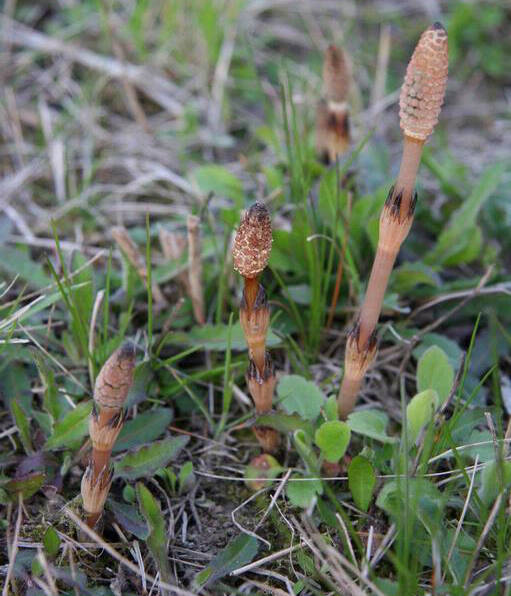Our deciduous trees and shrubs still had leaves when snow and cold temperatures abruptly arrived last November. Many branches now look dead. How can I tell which are alive so I can do some clean-up pruning?
Trees and shrubs can be resilient, so it is often good to delay clean-up after a weather event until you can fully assess the damage. In general, late winter and/or early spring is a good time to prune deciduous trees and shrubs. Healing is best at that time and the structure of the plant is more obvious.
You can wait and see which branches bud out (that is, develop leaves and flowers) or use one of the following methods to determine which parts of the tree or shrub are alive:
• The fingernail test. Scratch a tiny portion of bark on the stem or branch with your fingernail. If the scratch reveals green tissue (the cambium), the tissue is alive. If the tissue is brown that portion of the stem or branch is dead.
• The bend-but-don’t-break test. Gently bend stems or branches that are under a half-inch in diameter. If the stem/branch is pliable, it is alive. If it snaps, it’s dead at that point. Work your way down the stem or branch until it doesn’t break; at that point, the tissue is still alive.
• The bud test. Look at the leaf and flower buds along the branch. Plump buds that are beginning to swell suggest that that part of the plant survived the winter. Buds that look withered, limp or off-color (brown or black) or that crumble when crushed between your thumb and fingers are probably dead. Keep looking down the stem or branch until you see live buds.
Prune dead or partially dead branches back to their point of origin on the main trunk or where they attach to a larger branch. For best healing, prune just outside the branch collar (the swollen area of tissue that forms at the base of the branch).
You also can prune smaller branches (one-year-old wood) back to a quarter of an inch above a live bud. These heading cuts should be used sparingly because they can result in a profusion of new growth below the cut that will shade the inner portions of the plant.
How do you get rid of horsetail fern?
Horsetail fern is a weed that many gardeners battle. Understanding its structure can help with its control.
Horsetail fern consists of two types of hollow, jointed stems (see photos):
• Vegetative (sterile) stems that have green, needle-like leaves arranged in whorls around the joints, and
• Fertile stems that are tan-colored, without leaves that have spore-producing cones at their tips.
Both types of stems emerge in the spring, with the fertile stem usually appearing first. The fertile stems die back shortly after they shed their spores. The vegetative stems usually die back after the first hard frost in fall or winter.
Horsetail fern has a creeping root system that extends deep into the soil with fleshy tubers that store carbohydrates for future use. This energy-rich root system provides the plant with a remarkable regenerative capacity.
So how can you control horsetail fern? Efforts to dig up the plants or till them under worsen the problem because parts of the root system are inevitably left behind to regenerate.
You can, however, control horsetail by depleting the food reserves in its roots. Cut the stems off at ground level shortly after they emerge in spring and before they reach 8 inches in height. Be sure to discard or burn the fertile stems before they form spores. Repeat this process as new stems emerge. To successfully deplete the root reserves, you must cut back the plants multiple times each year for several years in a row.
Horsetail does not tolerate shade. Planting the affected area with a desirable crop and providing it optimum care can shade horsetail and help discourage its spread.
Inorganic mulches, such as heavy plastic, heavy grade weed barrier fabric or roofing paper can prevent horsetail from getting established in an area because germinating spores can’t grow through the material and into the soil. These materials can also suppress regrowth by pieces of the roots after the plants are cut, but the roots often run to the edge of the material and emerge there.
Layers of bark mulch, sawdust or other plant material will not control horsetail. Both vegetative and fertile stems just grow through them.
Several herbicides are registered for the control of horsetail but when used alone are rarely effective. In addition, care must be taken to not harm other plants intentionally being grown in the same area.
An integrated and long-term approach is the only way to successfully eliminate horsetail fern from an area. But it can be done. Good luck!
Jeanette Stehr-Green is a WSU-certified Clallam County Master Gardener.
Get help from an MG
For more free gardening help, visit a local Master Gardener plant clinic. Clinics are held 9:30 a.m.-12:30 p.m. on Mondays through October at the Clallam County Courthouse, 223 E. Fourth St., Port Angeles. They are also held 9:30 a.m.-12:30 p.m. on selected Saturdays (May 20, July 15, Aug. 19, Sept. 16) at the Master Gardener Woodcock Demonstration Garden, 2711 Woodcock Road. For more information, visit extension.wsu.edu/clallam/mg/plant-clinics.


